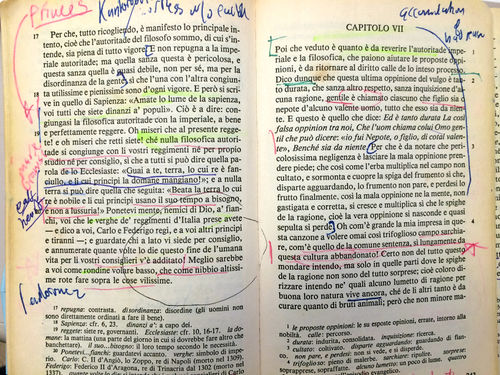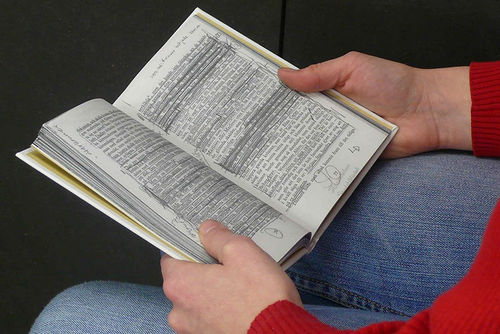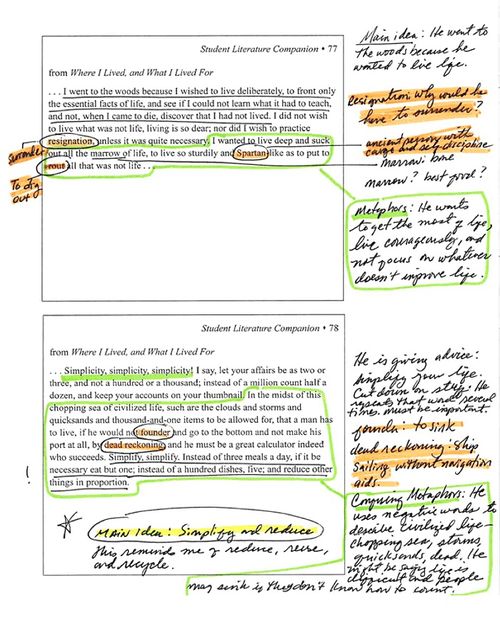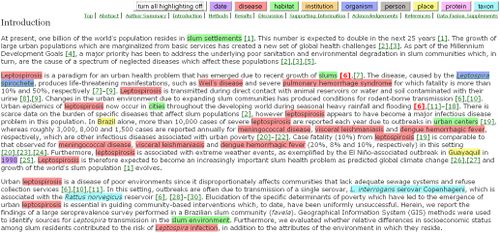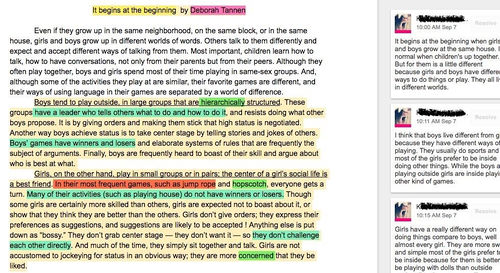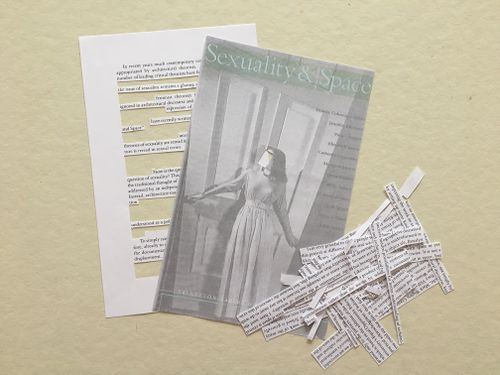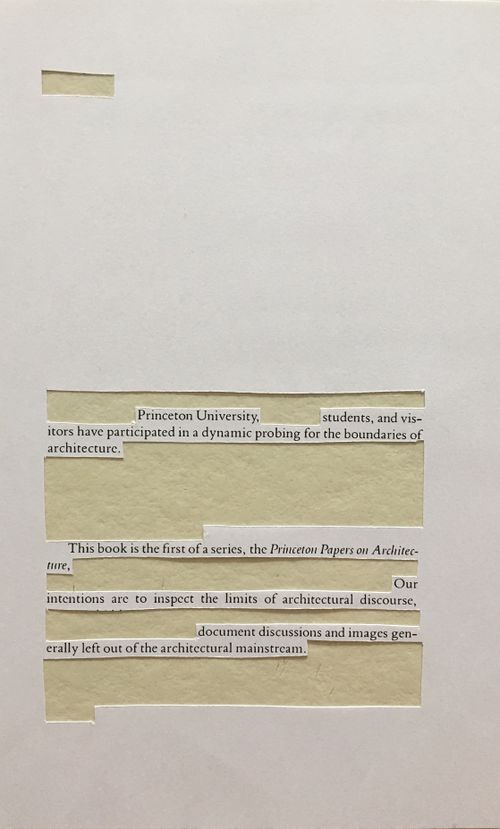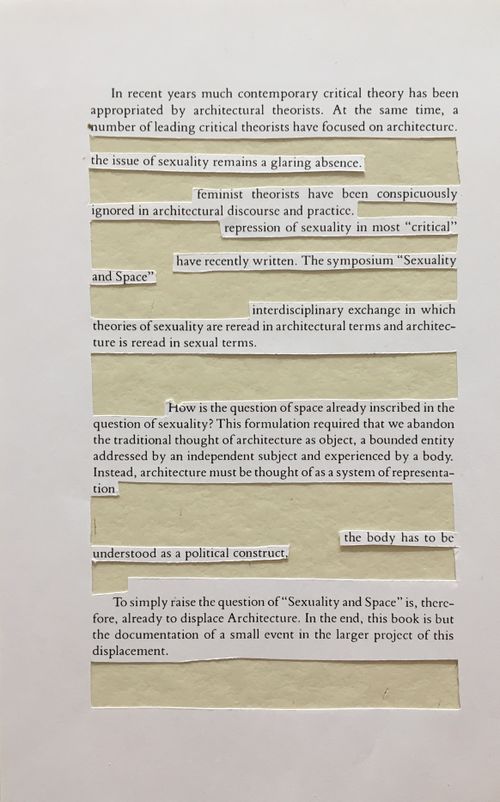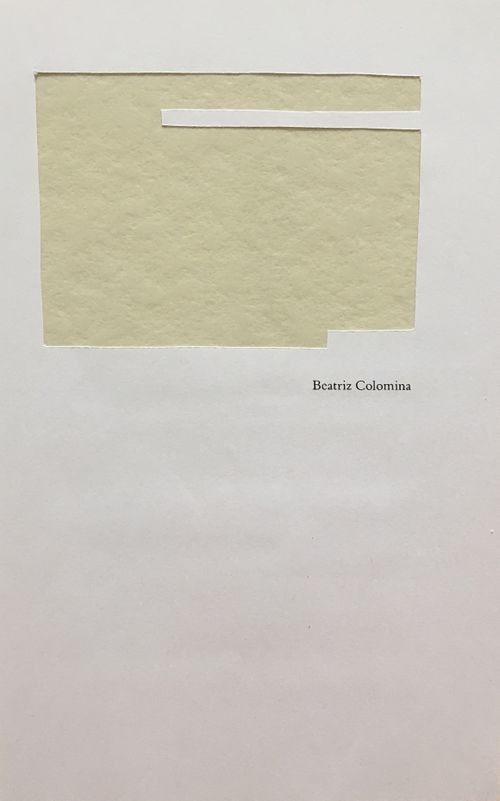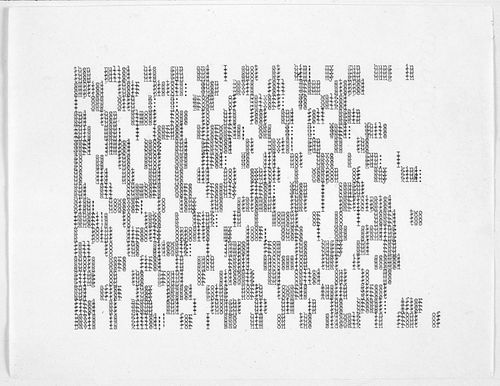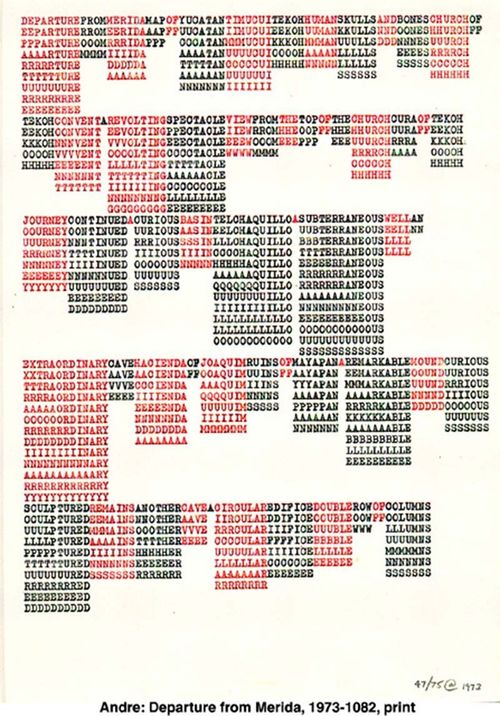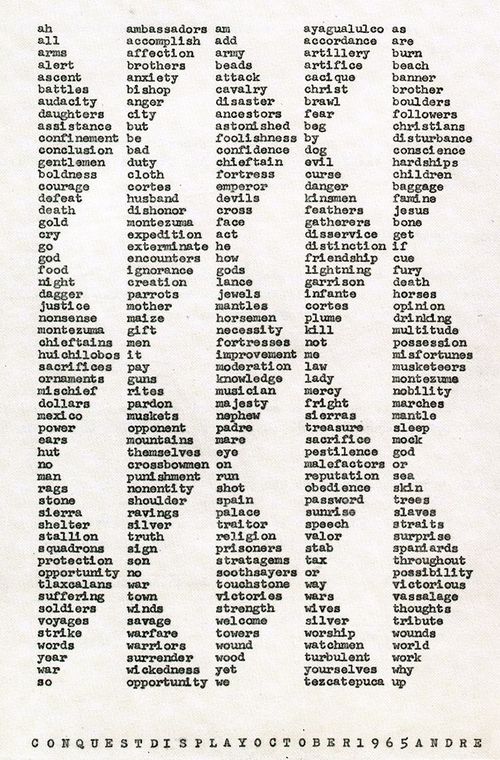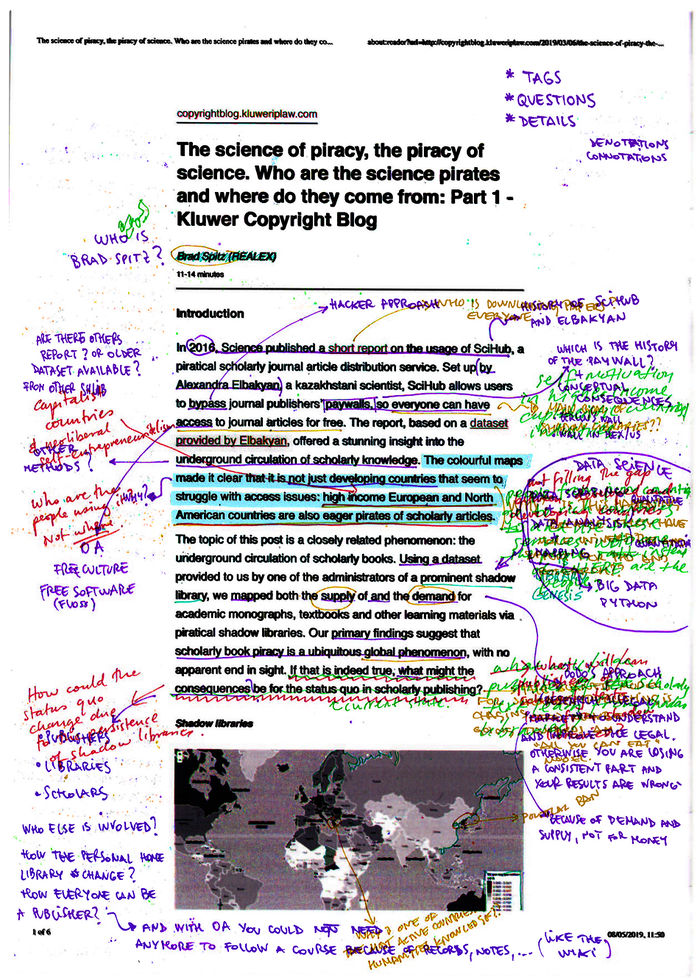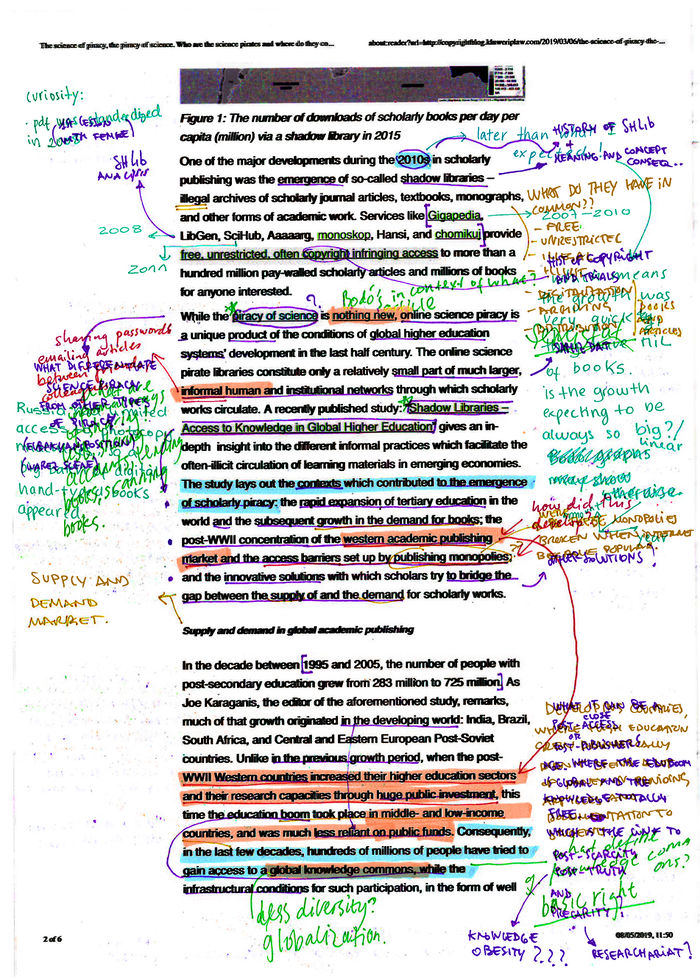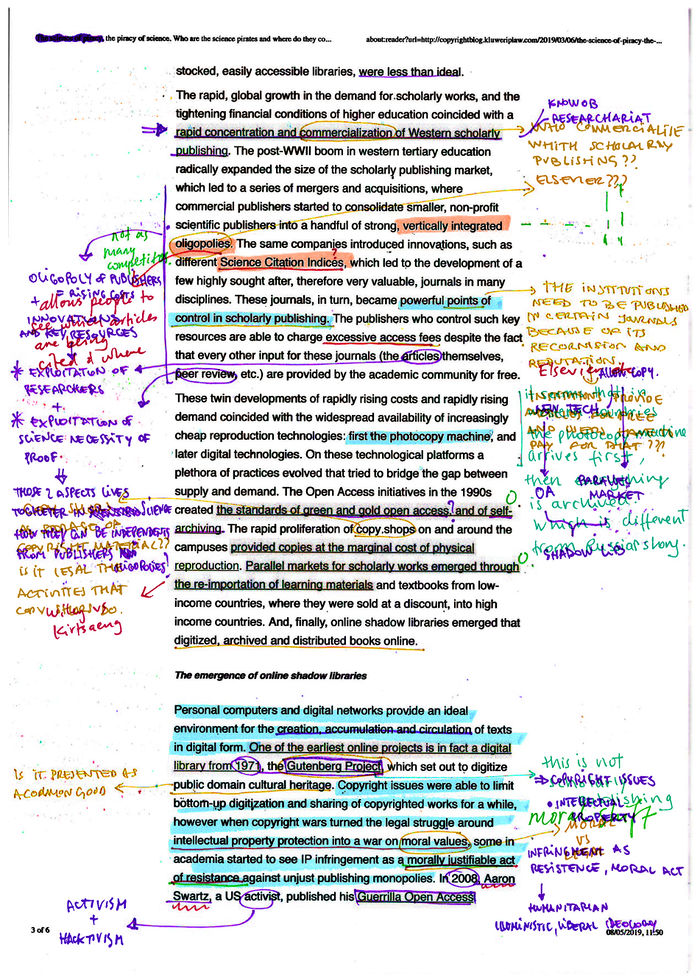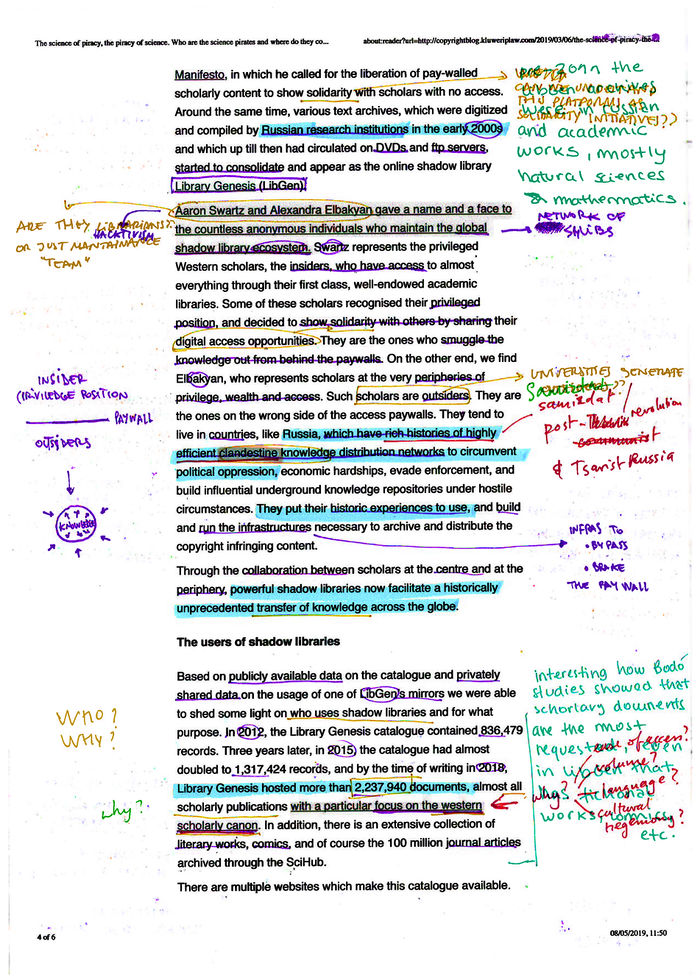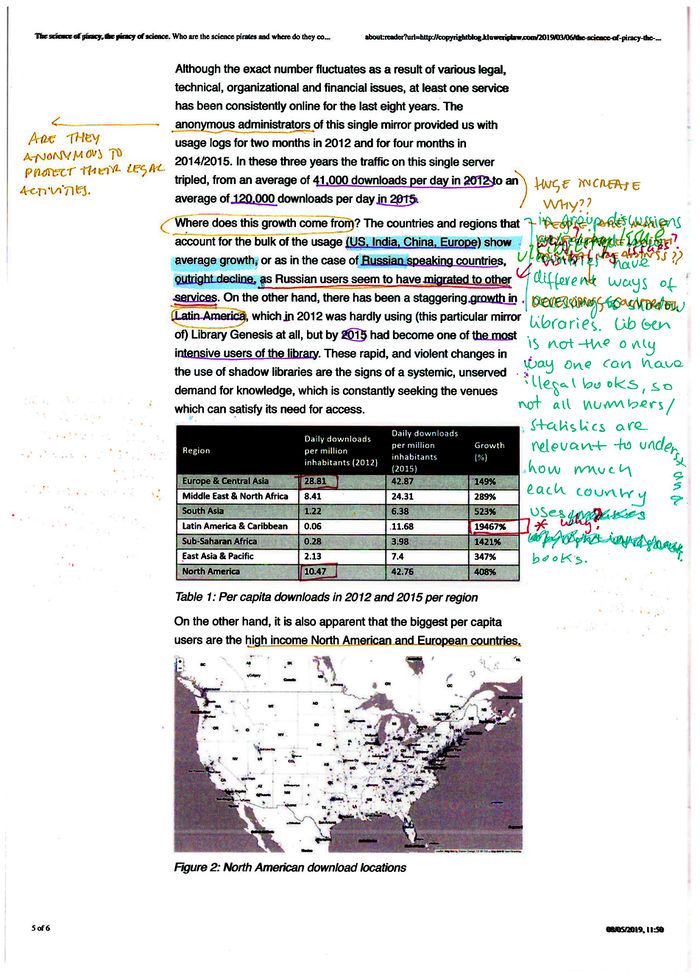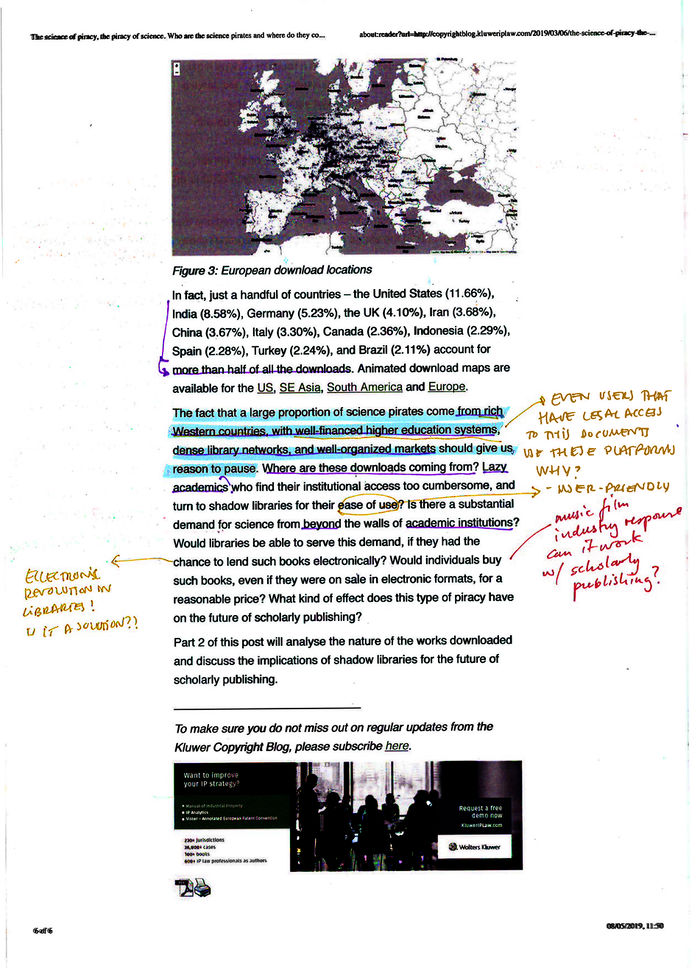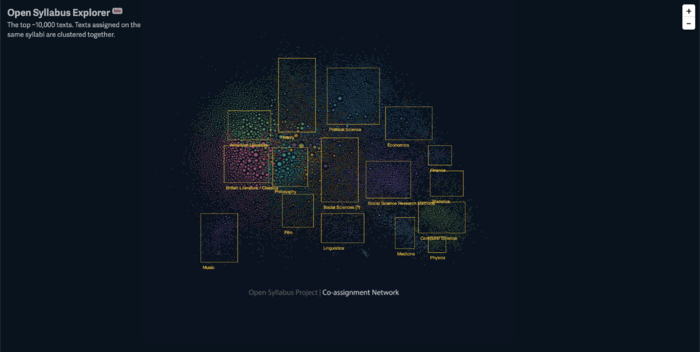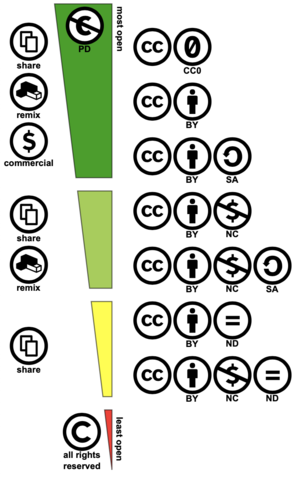User:Zpalomagar/SI9Inspiration
Dusan Barok
Tuesday 4 June
XPUB1 Special Issue 9: 10:00 - 17:00 / with Dusan + Femke in the small project space
Workshop with Dusan Barok
10:00 Discuss launch, plans, TODO-lists (Femke)
11:00 Dusan Barok on Monoskop
13:00 Lunch
14:00 Dusan on annotation; return to plans together
Annotations
What are the differences between physical and online annotation?
Physical annotation: graphical freedom, add personal value with typos, easy sign adding
Digital: Can be easily shared so the collaborative aspect is easier, it use to be more focus in highlighting or clasification. The appearance of the notes is really similar so the author loose identity.
What is the common point of this both of them have text that is never commented this means that this text is less relevant for the reader. Due to the huge amount of information that we have in a library ( more that we can process) can be possible to use the annotations to make books or articles smaller. Allowing the user read it faster and just skip the parts that doesn’t have a lot of interest. This would be associate with a definition of efficiency. We lived in a overactive world in which time is the most valuable thing that we have. This library could take the benefit of editing the content and make that content that is not important invisible in order to avoid the reader to recreate in that part. This can be specially useful in academic acticles. Maybe it is controversy with authorship considerations. That is why it is dark or shadow because you modify the original information without a specific consent.
Summarization can be defined as a task of producing a concise and fluent summary while preserving key information and overall meaning.
Abstractive Summarization: Abstractive methods select words based on semantic understanding, even those words did not appear in the source documents. It aims at producing important material in a new way. They interpret and examine the text using advanced natural language techniques in order to generate a new shorter text that conveys the most critical information from the original text.
It can be correlated to the way human reads a text article or blog post and then summarizes in their own word.
Input document → understand context → semantics → create own summary.
Extractive Summarization: Extractive methods attempt to summarize articles by selecting a subset of words that retain the most important points.
This approach weights the important part of sentences and uses the same to form the summary. Different algorithm and techniques are used to define weights for the sentences and further rank them based on importance and similarity among each other.
USEFUL
TIME-SAVING
EFFICIENT
PRACTICAL
MINIMAILST ( if we don’t have a reason to keep it, we remove it)
ECONOMICAL
INTELIGENT, CLEVER
Sexuality & Space
Brainstoriming
Concrete poetry
Eva weynmayr
Pirating books
No se lo digas a nadie - Jaime Bayly
The fist part of the book " Lo que no le dije a nadie" has been removed in the pirate version. ( personal notes from the author)
The original source is a book to Camila, Paola and Sandra and the pirate version just name Sandra
The pirate version reproduce the rights description ( not literally) which is quite ironic because is something that the artist broke when reproducing it.
The size, cover, binding, materiality etc. are completely different
The ISBN is the same and they are books with different content
Tho new chapters have been added "La fuga" and "El futbolista" that aparently have a random position in between the chapters.
The writing style seems to be quite similar in the original chapters and the new ones.
The pirate version develop new codes for italics, addition of new italics etc.
There are some small differences between the original text and the pirate one. Some exlamacions marks dissapear, some sentences are removed etc.
Italics are not the same
Retyped
Pirate terms
Copying Imitating Adapting Faking Cloning
Inserting
Camouflaging
Rietveld Aademy
Balázs Bodó
Overlap reader
The Workshop
Top10
Top 10 books in Spain
1—ENGLISH GRAMMAR— English Grammar In Use with Answers: A Self-study Reference and Practice Book for Intermediate Students of English 3rd edition
2—ENGLISH GRAMMAR— Araminta Crace with Richard Acklam New Total English Student’s Book (Upper Intermediate)
3—ENGLISH GRAMMAR— Rachael Roberts, Antonia Clare, JJ Wilson New Total English: Intermediate: Student’s Book
4—ART HISTORY— El arte de Acción
5—ART HISTORY— Roman Pottery: Fine-Ware Imports (Athenian Agora)
6—ENGLISH GRAMMAR— First Certificate Language Practice: With Key
7— SCIENCE— Fisica para La Ciencia y La Tecnologia
8—ENGLISH GRAMMAR— Highly Recommended 2: Student’s Book : Intermediate
9— COMPUTER SCIENCE— Organización y Arquitectura de Computadores 7 Edición
10—ENGLISH GRAMMAR— Essential Grammar in Use: A Self-Study Reference and Practice Book for Elementary Students of English: With Answers (Second Edition)
6/10 ARE ENGLISH GRAMMAR BOOKS which actually express a real worry among spanish academic people or young people who are the main users of this online platforms. This books are quite easy to find in book shops, libraries or general well-known shoppings.
WHICH OTHER COUNTRIES HAVE THIS TENDENCY?
Armenia Azerbaijan Bangladesh Bosnia and Herzegovina Brazil Bulgaria Czchez republic Georgia Hungary Kazakh Macedonia Poland Sierra Leone Sri-Lanka Timor Uzbekistan Vietnam
M-E-T-H-O-D-O-L-O-G-I-E-S (or not)
Thursday 18 April
11:00 Intro: m-e-t-h-o-d-o-l-o-g-i-e-s (or not)
11:15 Q + Q
12:00 Response-ability
13:00 Lunch / move to Museumpark
14:00 Phenomenal cartography
15:30 s\p\e\l\l\i\n\g and/or Diffractive reading and/or Renaming|reframing
17:00 Feedback + next session
Interfacing the Law
- Letter 1: In solidarity with Library Genesis and Sci-Hub
- Letter 2: Alexandra Elbakyan to Mr. Robert W. Sweet
- Letter 3: Dear participants in Interfacing the law!
Creative Commons
Creative Commons is a nonprofit organization that offers copyright licenses for digital work.
No registration is necessary to use the Creative Commons licenses. Instead, content creators select which of the organization's six licenses best meets their goals, then tag their work so that others know under which terms and conditions the work is released. Users can search the CreativeCommons.org website for creative works such as music, videos, academic writing, code or images to use commercially or to modify, adapt or build upon.

